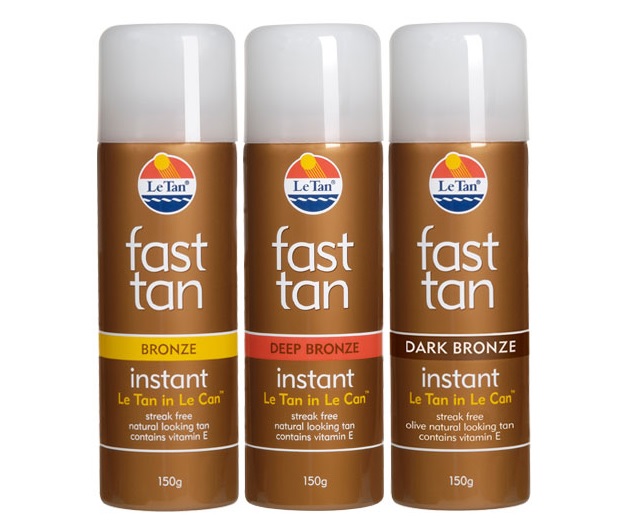A recent JPO decision over trademark opposition for “Le Tan” will serve as a cautionary message to brand owners who intend to launch business in Japan before too long.
Le Tan
Heritage Le Tan Pty Limited, an Australian Private Company, acquired the Le Tan brand in 2015 for use on tanning lotions & sprays, tanning oils, coconut screen, after sun, which has been made in Australia since 1977 and grown into the number one tanning brand in Australia.
Heritage filed a trademark application with the Japan Patent Office (JPO) for its iconic house mark (see below) on ‘Sunscreen preparations; lotions for cosmetic purposes; sun protection oils [cosmetics]; sunscreen creams; sun-tanning preparations [cosmetics]; self-tanning creams; self-tanning lotions; self-tanning preparations [cosmetic]; cosmetics’ in class 3 on October 28, 2019, when six months have passed after actual sales took place allegedly in April 2019, in Japan.

On November 30, 2020, the JPO examiner raised her objection due to a conflict with senior trademark registration no. 6251672 in contravention of Article 4(1)(xi) of the Japan Trademark Law.
Opposed mark “LE TAN”
Chanson cosmetics Inc., a Japanese private company, filed the cited mark “LE TAN” for use on ‘cosmetics and toiletries’ in class 3 on June 20, 2019, with the JPO.
The mark, consisting of words “LE TAN” and its transliteration written in Japanese Katakana characters (see below), was registered on May 14, 2020, and published for post-grant opposition on June 2, 2020.

Opposition: “Le Tan” vs “LE TAN”
Apparently, in anticipation of the upcoming refusal or perhaps, because of any other reason, Heritage filed an opposition against the mark on July 30, 2020.
In the opposition brief, Heritage argued the opposed mark shall be cancelled in contravention of Article 4(1)(xix) of the Trademark Law.
Article 4(1)(xix) prohibits registering a trademark that is identical with, or similar to, other entity’s famous mark, if such trademark is aimed for unfair purposes, e.g. gaining unfair profits, or causing damage to the entity.
Heritage argued a remarkable degree of reputation and popularity of the Le Tan mark in Australia in relation to sunscreen and suntan preparations [cosmetics] as a result of substantial use of the mark by producing evidence to demonstrate growing annual sales (approx. 16 million Australian dollars in 2017), the second market share of 16 % in Australia (2013) , increasing website visitors (approx. 86,000 in 2019) , email subscriptions (24,000) and followers (Instagram: 250,000, Facebook: 180,000) , and annual expense for advertisement and publication (approx. 0.6 ~ 1 million Australian dollars for the past decade) by means of television, radio, magazine, the internet.

Heritage mentioned they had begun to export their products since 2015 and launched promotion and distribution to Japanese consumers in April 2019.
In an attempt to prove Chanson’s unlawful intention, Heritage pointed out the fact that Chanson has registered the mark “LE TEMPS” pronounced the same as “LE TAN” on the same class since 1984 and used the mark on skin-care cosmetics in fact. Heritage alleged that it appeared unreasonable for Chanson to file the opposed mark which has a same pronunciation but different spelling since Chanson must be convinced that skin-care conscious consumers are unwilling to use cosmetics giving rise to an impression of ‘the suntan.’ If so, Chanson must have filed the opposed mark just two months after the launch of trademarking Australian brand “Le Tan” in Japan simply because of interrupting their business.
JPO Decision
The Opposition Board of the JPO admitted a certain degree of reputation and popularity of the “Le Tan” mark in Australia in view of substantial use on sunscreen or suntan preparations [cosmetics] over four decades, however, the Board denied Heritage’s allegation that the opposed mark was filed with a malicious intention by stating:
From the totality of circumstance, the Board can’t find any reason to believe that Chanson sought for protection of the opposed mark to gain unfair profits or cause damage to the opponent. A mere fact the opposed mark was filed a few months after the opponent started to use the “Le Tan” mark in Japan was insufficient to find unfair purposes subject to Article 4(1)(xix). Heritage failed to convince the Board of the likelihood of interruption. Noticeably, according to the produced evidence, the opponent business in Japan is expanding contrary to their allegations.
Based on the foregoing, the JPO decided to dismiss the opposition entirely and concluded the Opposed mark shall remain valid as the status quo.

Masaki MIKAMI, Attorney at IP LAW – Founder of MARKS IP LAW FIRM

